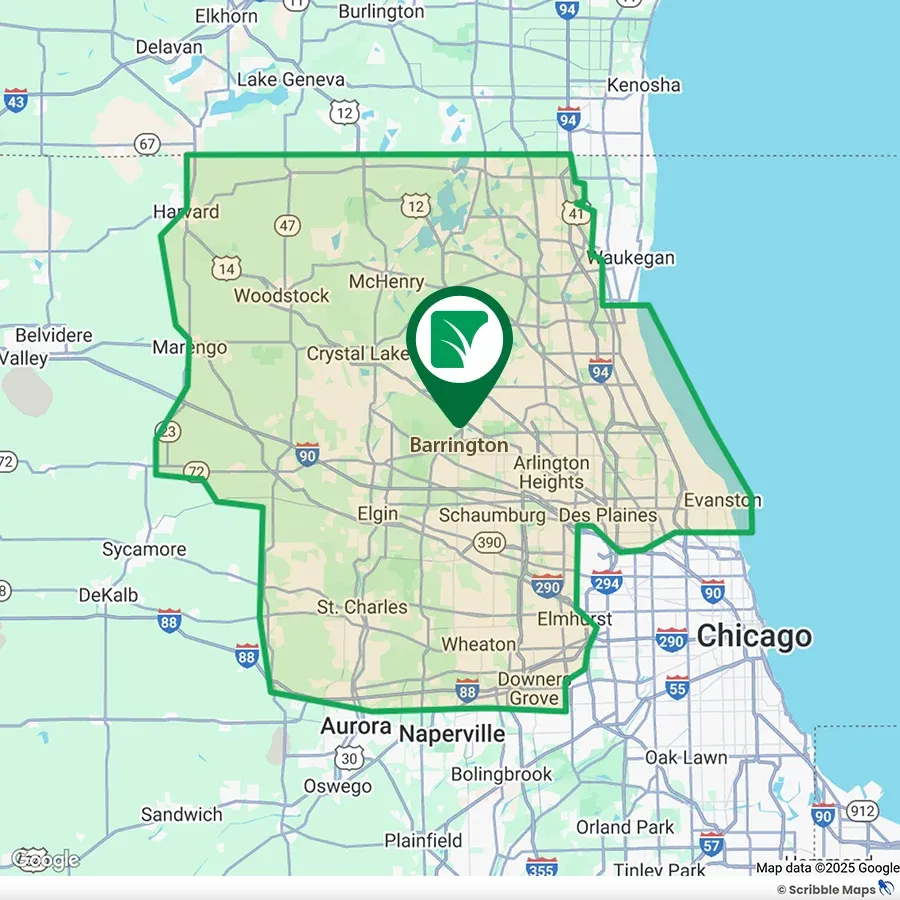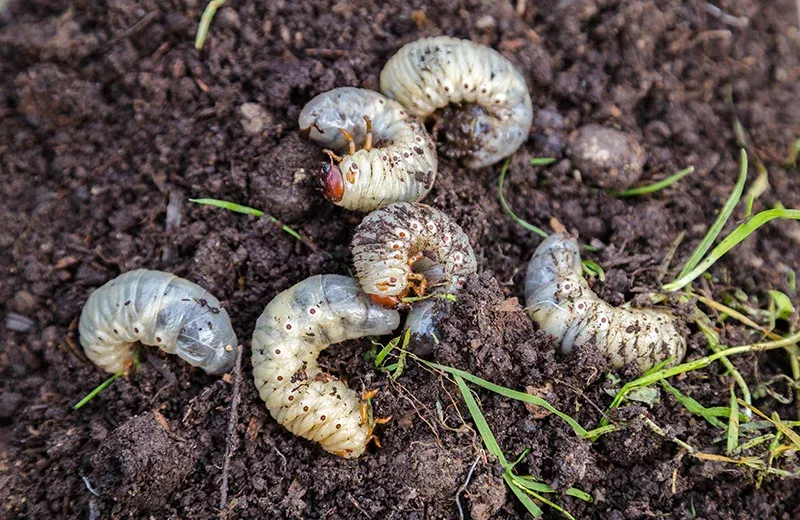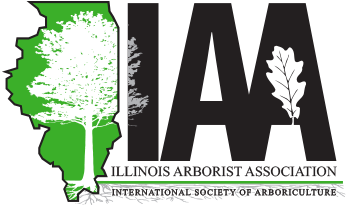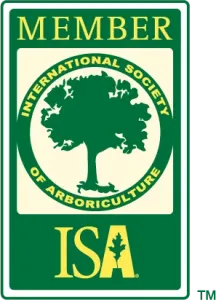Lawn Insect Control in the Northern Chicago Suburbs
Not to worry – Our certified lawn technicians are experts at identifying and controlling any of your turf damaging insects. We have been protecting homeowner’s lawns in the northwest suburbs of Chicago against insect attacks since 1986. We have solutions for even your toughest turf damaging insects. Best of all you will love our Natural Based Holistic approach that is proven to reduce insect attacks and damage.
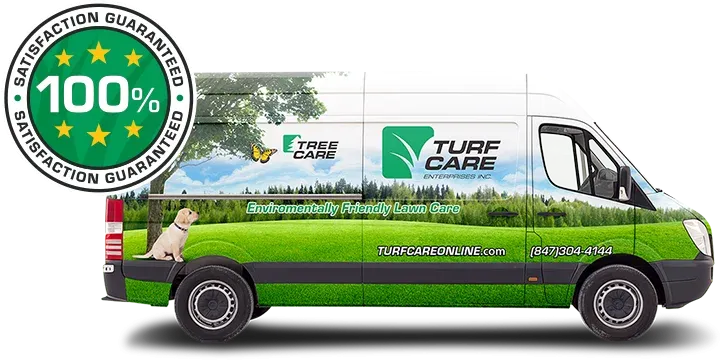
Preventing Lawn Damage from Insects
We all have insects in our lawns; some are beneficial, like earthworms, lady beetles, and big-eyed bugs. Then there are the turf-damaging insects that love to make a meal out of your lawn. There are two main types of insects that damage turfgrass. Surface-feeding insects – that feed on the blades of your grass, like – Aphids, Chinch Bugs, Sod-Webworms, and Cutworms. Sub-surface insects – that feed on the roots of your grass like Grubs. If left unchecked, the damage insects cause to your lawn can be both extensive and expensive to repair.
Traditional Insect Control Methods
The most common method of controlling insects includes the use of chemical insecticide treatments. You will see these materials added to bagged fertilizer provided in hardware stores and garden centers. Many local lawn care firms automatically treat their lawns with an insecticide, whether your lawn needs it or not, as part of their lawn care program. We disagree with this approach, as many insecticides can also affect the beneficial insects in your lawn. Kill your earthworm population, and it can take up to three years before their populations return to normal. Earthworms help aerate your soil and turn dead plant particles into rich organic soil. Think of insecticides like medications; they all come with side effects, so it is important to limit the use of these materials unless they are absolutely needed.
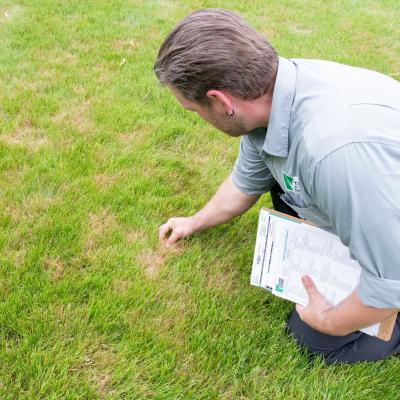
Our Natural Based 3-Step Insect Control Process
Turf-damaging insects can be commonly found in our local lawns from Spring through Fall. They can fly in from miles away to feed on your turf. Unless you put a protective dome over your property, you will not stop them from landing on your lawn. Because these insects do not follow precise schedules, it is difficult to know exactly when they will arrive. We found our 3-step process is the best natural based way to protect your lawn from insect damage.
Step 1—Use our natural-based holistic lawn care process. This approach strengthens the health of your turf grass so that when insects attack your lawn, it is strong enough to bounce back quickly with little damage.
Step 2 – Water your lawn regularly. The most common insect attacks in this area are from insects that normally cannot kill your turf by themselves. However, if these insects attack your lawn in hot, dry weather and you cannot water, the combination of these factors can cause enough stress to kill your grass.
Step 3 – Monitor your lawn in between our lawn care visits, watching for irregular browning. Brown areas that show up in a well watered lawn are usually from an insect or disease invasion, notify us immediately so we can inspect your lawn for damaging insects, and treat before serious damage occurs.

Treatment Safety
If we do have to treat your lawn with an insect control application, you have our assurance that we will use the safest material available. We try to use materials that pose little harm to the environment but still effectively control your turf-damaging insects. Most of our insect treatments have been tested and proven to be less toxic than common table salt for your family and pets. If we ever need to use something stronger, we will always get your approval first.
Natural-Based Holistic Insect Control Approach
We use a natural-based holistic approach to help protect lawns from insect damage. This approach significantly reduces the need for insect control treatments. Our approach first focuses on identifying what your plants need for optimal health. Healthy lawns can tolerate insect attacks better, rarely developing permanent damage. We also focus on naturally reducing thatch levels as thatch provides a desirable home and breeding ground for many turf-damaging insects.
Inspect your lawn frequently
Damage from insects can be extensive and can occur over a very short period of time. Regular inspections by a professional lawn care service can help you avoid costly repairs. Our lawn care technicians are trained on how to identify signs of insect activity when they are out servicing your property. It is important to be on one of our full season lawn care programs. However, this alone will not stop all insect damage, as our treatments are normally spread 5-7 weeks apart. A lot can happen in between our scheduled visits, so it's important to follow our 3 step process above, informing us immediately when you notice potential insect activity.
How can I identify lawn feeding insects?
Surface feeding insects are occasionally visible to the naked eye and feed on the surface of the lawn. Professionals know how to locate and identify these insects as they are usually very tricky. For example, chinch bugs will actually freeze when they sense movement of the grass. This makes them very difficult to locate and identify unless you know exactly what other things to look for.
What are the most common types of surface feeding lawn insects?
In our area, we see a variety of surface-feeding insects, including Aphids, Chinch Bugs, Sod Webworms, Cutworms or Armyworms to name a few. Turf Care Enterprises includes inspection for surface feeding insects and disease with every visit. Our Gold and Platinum Programs automatically include treatment and inspection for surface feeding insects when we are out on your property. Make sure you have this important service included in your program.
What are the most common types of sub-surface feeding insects in our area?
Sub-surface insects are even more difficult for the average homeowner to detect and generally can cause more extensive damage to your lawn because they often are discovered after the damage has occurred. These insects are already out of control long before the damage becomes visible on the surface. These insects feed below the surface on the roots of the grass and without roots, grass cannot survive. The best way to combat their damage is to have a preventative treatment plan in place. Sub-surface insects can include billbug larvae and grubs. It is important to have a lawn program that includes regular visits from a professional that knows how to spot and treat insect damage.
Looking for Lawn Insect Control Near You?
Our expert technicians use environmentally friendly treatments to help control destructive lawn insects, protecting your property's green spaces from costly damage from chinch bugs, grubs, and other damaging pests. We provide targeted, localized lawn insect control solutions that safeguard your landscape while ensuring the health and beauty of your residential property.
